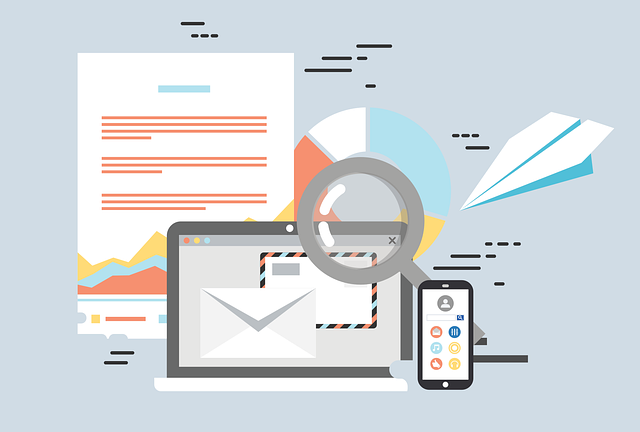In the ever-evolving landscape of automotive marketing, the battle between email marketing and direct mail has been raging on. Both strategies have their merits, but which one truly reigns supreme in the automotive sector? Let’s dive into the data and analyze the effectiveness of these two approaches.
On one hand, email marketing has become a staple in the industry, allowing automotive businesses to reach their target audience with personalized and timely messages. With a click of a button, you can deliver enticing offers, showcase new models, and nurture customer relationships. But, is it really the most effective tool?
On the other hand, direct mail has stood the test of time, offering a tangible and memorable experience for recipients. From eye-catching brochures to personalized letters, automotive businesses can make a lasting impression on their customers’ doorsteps. But does it still hold up in today’s digital age?
Join us as we delve into the world of automotive marketing and explore the benefits, advantages, and metrics of email marketing and direct mail. Discover the power of data-driven strategies and find the perfect balance to drive your automotive business forward.
Key Takeaways
- Email marketing allows for personalized and timely messages, reaching a broader audience quickly and at a lower cost.
- Direct mail offers a tangible and memorable experience, maximizing reach and creating a lasting impression on potential customers.
- Email campaigns have a lower cost, higher ROI, and better deliverability compared to direct mail.
- Finding the right balance and integrating email marketing and direct mail enhances marketing efforts and drives better results in the automotive sector.
Understanding the Target Audience in the Automotive Sector
You need to understand your target audience in the automotive sector to effectively engage them and drive meaningful results. In order to do so, it’s crucial to analyze customer preferences and develop effective communication strategies.
The automotive sector is diverse, with different segments of customers having varying needs and preferences. By studying market research data, you can gain insights into consumer behavior, such as their preferred vehicle types, budget constraints, and buying habits. This understanding allows you to tailor your messaging and offers to resonate with the target audience, increasing the chances of conversions and customer loyalty.
Moreover, leveraging data analytics can help you identify the most effective communication channels to reach your audience, allowing you to optimize your marketing efforts. By focusing on customer preferences and effective communication strategies, you can create impactful marketing campaigns that drive results.
Now, let’s explore the benefits of email marketing in the automotive industry.
Benefits of Email Marketing in the Automotive Industry
Email marketing is a cost-effective and efficient strategy for the automotive industry. It allows you to reach a large audience at a fraction of the cost of traditional marketing methods like direct mail.
With email campaigns, you can personalize and segment your messaging to target specific customer demographics, increasing the chances of engagement and conversion.
Furthermore, automated workflows and lead nurturing enable you to streamline your marketing efforts and provide timely and relevant content to your prospects, ultimately driving more sales and growth for your business.
Cost-effectiveness and efficiency of email campaigns
Although email campaigns may seem like the more cost-effective and efficient option for the automotive sector, it’s important to consider the potential impact of direct mail in reaching a wider audience and increasing brand visibility.
However, when it comes to cost-effectiveness, email marketing has a significant advantage over direct mail. Here are three reasons why:
-
Lower Costs: Sending emails is much cheaper than printing and mailing physical materials. With email campaigns, automotive companies can save on printing, paper, and postage costs.
-
Higher ROI: Email marketing offers a higher return on investment compared to direct mail. According to industry data, the average ROI for email campaigns in the automotive sector is around $42 for every dollar spent.
-
Better Email Deliverability: Email campaigns allow for better tracking and deliverability rates. Companies can track open rates, click-through rates, and other metrics to measure the success of their campaigns and make data-driven improvements.
By leveraging the cost-effectiveness and efficiency of email campaigns, automotive companies can allocate their resources strategically to focus on personalization and segmentation for targeted messaging.
Personalization and segmentation for targeted messaging
With personalized and segmented messaging, your automotive campaigns can resonate deeply with your target audience, fostering a sense of connection and driving brand loyalty. Data analysis plays a crucial role in understanding customer behavior and preferences, allowing you to tailor your messages accordingly. By segmenting your audience based on demographics, purchase history, or browsing behavior, you can deliver highly relevant content that speaks directly to their needs and interests. For example, using a data-driven approach, you can send personalized offers to customers who have recently shown interest in a specific vehicle model. This level of personalization not only increases customer engagement but also enhances the overall customer experience. Incorporating a 2 column and 3 row table, showcasing how personalization and segmentation can boost key metrics such as open rates, click-through rates, and conversion rates, can evoke an emotional response in your audience. By leveraging these strategies, you can create compelling campaigns that build lasting relationships with your customers. Transitioning into the next section about automated workflows and lead nurturing, you can further optimize your campaigns for maximum effectiveness.
Automated workflows and lead nurturing
By implementing automated workflows and nurturing leads, you can streamline your automotive campaigns and cultivate stronger connections with your target audience.
Automated workflows allow you to set up a series of predetermined actions that are triggered based on specific lead behaviors or characteristics. This not only saves time and effort but also ensures that your messaging is timely and relevant.
For example, if a lead visits your website and downloads a brochure, you can automatically send them personalized follow-up emails with additional information about the specific vehicle they showed interest in. This level of personalization and automation not only helps in lead generation but also improves lead nurturing, as you can continue to engage with your prospects throughout their customer journey.
By leveraging automated workflows, you can effectively nurture leads and increase the chances of converting them into loyal customers.
Transitioning to the subsequent section about the advantages of direct mail for automotive businesses, let’s explore how this traditional marketing method can complement your digital efforts.
Advantages of Direct Mail for Automotive Businesses
Maximize your reach and connect with potential customers on a deeper level by leveraging the power of direct mail for your automotive business. Direct mail offers several advantages for automotive businesses in terms of customer retention and brand awareness.
-
Tangible Impact: Direct mail allows you to physically put your message in the hands of your target audience, creating a lasting impression and increasing the chances of engagement.
-
Personalization: With direct mail, you can tailor your message to specific customer segments, increasing the relevance and effectiveness of your communication.
-
Less Competition: Compared to email marketing, direct mail faces less competition in the mailbox, allowing your message to stand out and capture attention.
-
Higher Response Rates: Studies have shown that direct mail tends to generate higher response rates compared to email marketing, resulting in more leads and potential sales.
By utilizing direct mail in your marketing strategy, you can effectively increase customer retention and build brand awareness. However, measuring success is crucial. Transitioning into the subsequent section about ‘measuring success: metrics for email marketing‘, it’s important to understand the key metrics that determine the effectiveness of your email campaigns.
Measuring Success: Metrics for Email Marketing
Get ready to dive into the world of email marketing metrics, where you can track the success of your campaigns and visualize the impact of your automotive business’s email efforts.
Email marketing metrics provide valuable insights into the effectiveness of your email campaigns, allowing you to measure your performance and make data-driven decisions.
Key metrics to track include open rates, click-through rates, and conversion rates. Open rates indicate the percentage of recipients who open your emails, while click-through rates measure the number of recipients who clicked on links within your emails.
Conversion rates are particularly important as they show the percentage of recipients who took a desired action, such as making a purchase or filling out a form. By analyzing these metrics, you can identify areas of improvement and optimize your email marketing strategy for maximum engagement and conversion.
Transitioning into the subsequent section about measuring success with direct mail, it is important to understand the different metrics and their implications for both channels.
Measuring Success: Metrics for Direct Mail
Don’t miss out on the opportunity to measure the success of your direct mail campaigns and see the impact of your efforts in the automotive industry. By tracking key metrics, you can gain valuable insights into the effectiveness of your direct mail strategy.
Here are three important metrics to consider:
-
Response Rate: This metric measures the percentage of recipients who respond to your direct mail piece. It helps you gauge the level of interest and engagement from your target audience.
-
Return on Investment (ROI): Calculating the ROI of your direct mail campaigns allows you to determine the profitability of your efforts. By comparing the cost of your campaign to the revenue generated, you can assess its success.
-
Conversion Rate: The conversion rate measures the percentage of recipients who take a desired action, such as making a purchase or scheduling a test drive. It indicates the effectiveness of your direct mail in driving actual sales.
Measuring these metrics will provide you with valuable data to optimize your direct mail campaigns.
Transitioning into the next section, finding the right balance between integrating email marketing and direct mail is crucial for maximizing your marketing efforts.
Finding the Right Balance: Integrating Email Marketing and Direct Mail
Now that you understand the metrics for measuring success in direct mail campaigns, it’s time to explore the importance of finding the right balance between email marketing and direct mail in the automotive sector.
Integrating these two channels can significantly enhance your marketing efforts and drive better results. By leveraging customer data, you can strategically determine when to use email marketing and when to rely on direct mail.
For instance, email marketing can be effective in reaching a broader audience quickly and at a lower cost. On the other hand, direct mail allows for a more personalized and tangible experience, making it ideal for targeted campaigns or for engaging with high-value customers.
By finding the right balance and integrating these two channels, you can maximize your reach and impact in the automotive sector.
Frequently Asked Questions
What are some common challenges faced by automotive businesses when it comes to understanding their target audience?
Understanding target audience challenges is crucial for automotive businesses. Effective customer segmentation is essential to tailor marketing strategies and messages to specific customer groups. However, automotive businesses often face common challenges in this area.
One challenge is the lack of accurate and up-to-date customer data, which hampers the ability to understand customers’ preferences and behaviors. Another challenge is the difficulty in identifying and targeting niche customer segments within the broader automotive market.
Overcoming these challenges requires robust data analysis techniques and market research to gain insights into the target audience.
How can email marketing help automotive businesses in building brand loyalty and customer engagement?
To build brand loyalty and increase customer engagement, email marketing is a powerful tool for automotive businesses. By leveraging the convenience and personalization of email, you can strengthen your brand reputation and enhance customer retention.
Through targeted email campaigns, you can deliver relevant content, exclusive offers, and personalized recommendations, creating a sense of exclusivity and value for your customers.
Data-driven analysis allows you to track engagement metrics, identify trends, and optimize your strategies for maximum impact.
What are the key advantages of direct mail for automotive businesses that cannot be achieved through email marketing?
Direct mail offers several key advantages for automotive businesses that cannot be achieved through email marketing.
Firstly, direct mail allows for a more personal and tangible experience, as customers physically receive and interact with the mail. This can create a stronger emotional connection and increase the chances of customer engagement.
Additionally, direct mail has a higher response rate compared to email marketing, with studies showing that direct mail campaigns generate a 4.4% response rate, while email marketing only achieves a 0.12% response rate (DMA Response Rate Report, 2020).
Finally, direct mail allows for better targeting and segmentation, as businesses can send specific offers and promotions to customers based on their demographics, purchase history, or location, resulting in higher conversion rates.
Overall, direct mail provides unique advantages that cannot be replicated through email marketing, making it a valuable marketing tool for the automotive sector.
Are there any specific metrics that automotive businesses should focus on when measuring the success of their email marketing campaigns?
To measure the triumph of your email marketing campaigns, focus on the email marketing ROI and key performance indicators (KPIs). These metrics provide valuable insights into the effectiveness of your campaigns.
Track metrics like open rates, click-through rates, conversion rates, and unsubscribe rates. Analyzing these KPIs will help you gauge the success of your email campaigns and make data-driven decisions for future strategies.
Remember, data is the fuel that drives automotive businesses towards greater success in the digital era.
How can automotive businesses effectively integrate both email marketing and direct mail to maximize their marketing efforts?
To effectively integrate email marketing and direct mail for maximum marketing impact, automotive businesses should focus on personalization techniques for email campaigns and strategies for creating compelling direct mail content.
For email marketing, segment your audience based on demographics, behavior, and preferences to tailor your messages and offers. Use dynamic content and personalized subject lines to increase open rates and click-through rates.
For direct mail, consider using eye-catching designs, engaging copy, and personalized offers to capture attention and drive response rates.
Conclusion
In conclusion, when it comes to reaching the target audience in the automotive sector, both email marketing and direct mail have their advantages.
Email marketing allows for personalized and targeted communication, while direct mail provides a tangible and tactile experience.
By measuring success through metrics such as open rates and click-through rates for emails, and response rates and conversion rates for direct mail, automotive businesses can gauge the effectiveness of their marketing efforts.
Finding the right balance between these two strategies is crucial, like fine-tuning an engine to achieve optimal performance.









